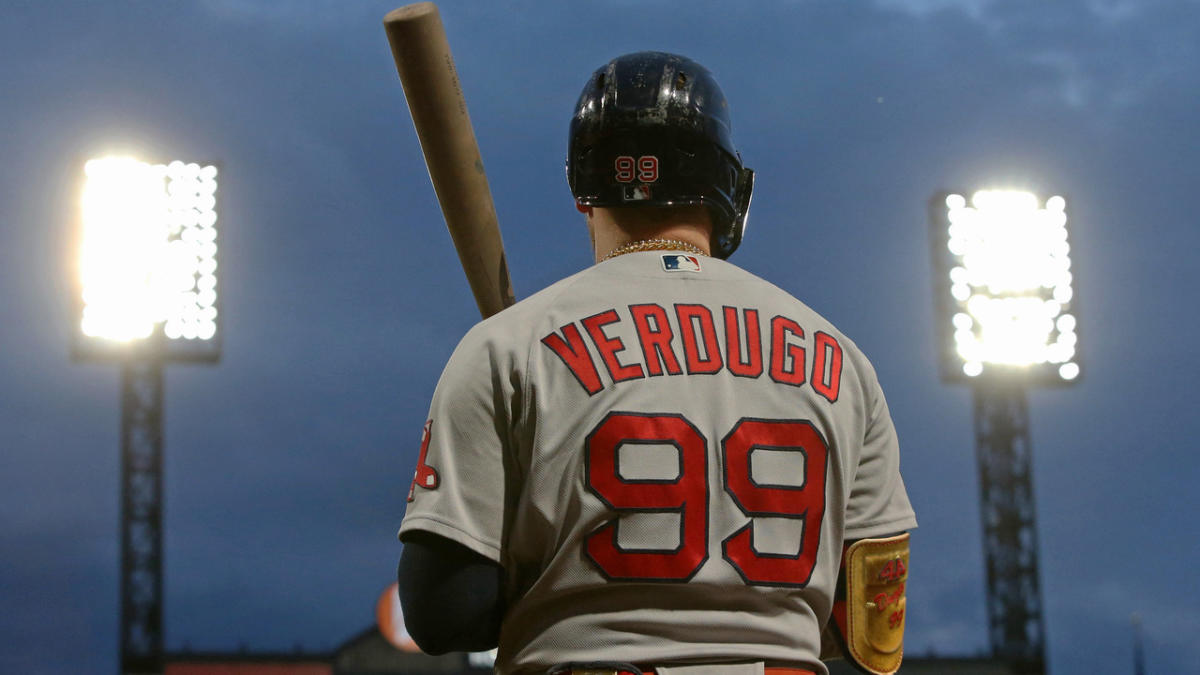
Tomase: Verdugo needs to make a leap before he’s pushed out the door originally appeared on NBC Sports Boston
One season. That’s all Alex Verdugo realistically has left to prove he’s anything more than exceedingly average.
The centerpiece of the Mookie Betts trade has occasionally tantalized with his ability to put the ball in play and use the whole field like a left-handed D.J. LeMahieu, but mostly he’s just sort of there: an average hitter with average power who runs into too many outs and should play better defense.
We still hope his ceiling is our idealized version of Andrew Benintendi, but Verdugo has instead basically duplicated a player the Red Sox dumped two years ago.
That’s not good enough, which makes this offseason pivotal. Manager Alex Cora minced no words when asked recently which player had the most to prove.
“Alex,” he said. “He’s getting to that area in his career of who he’s going to be. We talked about this with Benny a few years ago and you see the player he has become. He has become a better defender, a good hitter, and I think Verdugo has a chance to hit for power, hit for average, but he can impact the game running the bases and playing defense.
“We’re going to push him hard this offseason to get back to play faster, to play quicker. I think athletic-wise, he can do that.”
Verdugo will play for Team Mexico in the World Baseball Classic, and Cora hopes that means he comes to spring training in better shape than last year. What’s unclear is how much room Verdugo has to improve.
Over the last two years, covering what should be his breakout age 25 and 26 seasons, Verdugo has hit .284 with a .754 OPS. He has averaged 12 homers and 68 RBIs a year, which is as average as average gets, especially for an outfielder.
The Red Sox cite advanced metrics suggesting Verdugo deserved better numbers based on his quality of contact, but a perusal of history shows that if a hitter hasn’t had a standout season by age 26, then he’s probably not going to have one at all. Verdugo’s best “season” came during the pandemic, when he hit .308 in 53 games while earning one down-ballot MVP vote.
Otherwise, his seasons have followed a similar pattern of a couple of good months surrounded by four forgettable ones. The Red Sox hoped for much more when they acquired him from the Dodgers in the Betts blockbuster, and now they face a decision.
Tomase: Arbitration projections hint at Red Sox’ offseason plans
With Verdugo projected to make roughly $7 million in arbitration, he has officially reached the point where his pay outstrips his production. When the Red Sox drew a similar conclusion with outfielder Hunter Renfroe last winter, they traded him to the Brewers in a deal they’d probably like back.
Verdugo could be staring at a similar fate, although the fact that he arrived for a former MVP probably gives him a little more time. Still, with holes to fill all over the roster and the free agent class not particularly deep, the Red Sox will likely go the trade route this winter. Verdugo could be an attractive piece at a reasonable price for any team that believes he has more to give.
Maybe that team is the Red Sox and he’s not going anywhere. Cora noted that Verdugo added some weight last winter in an attempt to hit for more power, a decision that backfired in the field and on the bases, where Verdugo looked more sluggish than dynamic.
“I think it kind of like, cost him in other aspects of the game,” Cora said. “I think the offseason is going to dictate where he plays (in the field) next year, but I do believe he can be a lot better. A lot better regardless of whether he plays left or right, he can be a better defender. … This is a guy, we envision him to be an impact player not only in the batter’s box, but on the other side.”
The Red Sox can project, and envision, and hope all they want. It’s time for Verdugo to prove he’s something more than mediocre.
